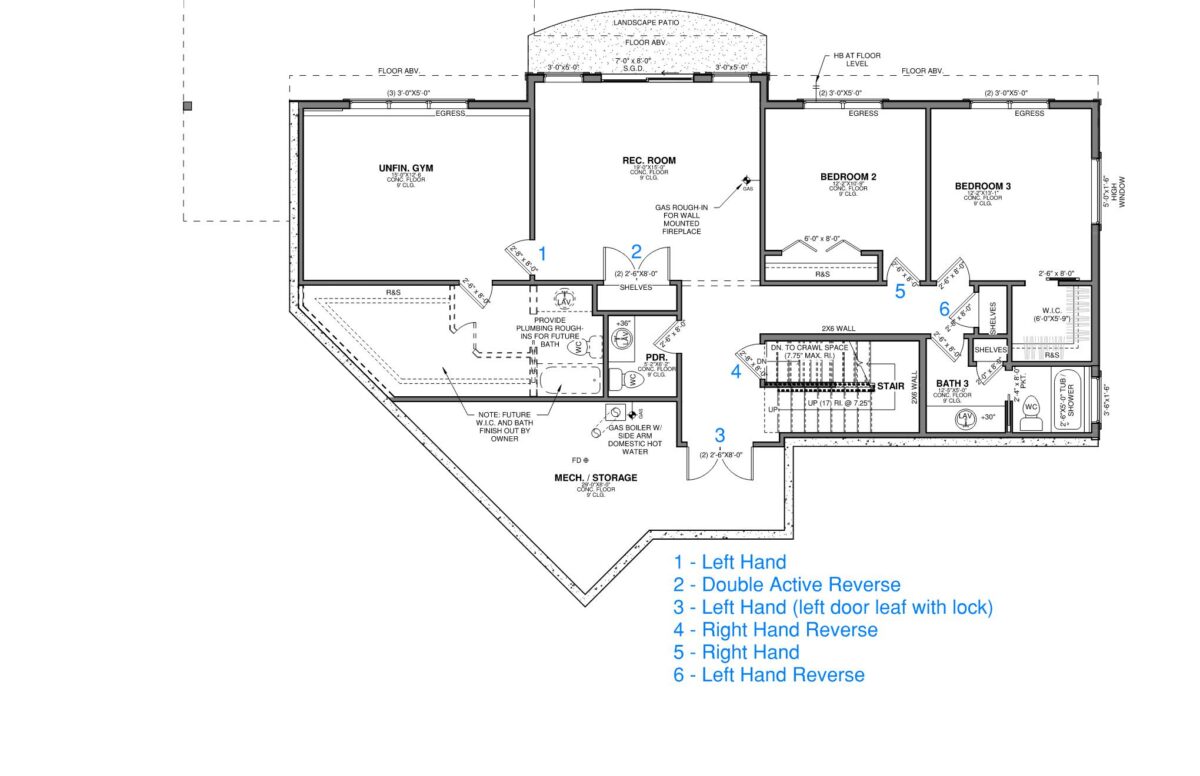Architects, contractors, and building owners need to all speak the same language when specifying and selecting doors for their projects. Whether that is for new construction or door replacement for existing structures, this is equally applicable for commercial and residential projects. There are a host of topics when specifying doors, but here we’ll focus on door handing. Door handing refers to specifying which side, left or right, and also in which direction it swings, toward you or away from you. The critical determination of this specification is the approach side of the door.
What is meant by “the approach side”? The architecture profession has established the standard for the approach to be the outside, or key side. For exterior doors this is pretty intuitive, as the outside and inside of a building are pretty clearly delineated. Determining approach side or key side can be confusing when it comes to specifying handing for interior doors. It’s also true that not all doors receive keyed locks, but keeping that premise in mind is how we have to think about it. Another practical way to think about handing is the sequence of traveling through the spaces and rooms of a building. So in a basic sense, the exterior entry leads to a hall or common area which lead to individual rooms, and within each lead to more rooms, restrooms, or closets.
Now that the approach side is explained, the swing direction is specified as which hand you’re using to open the door. This can be confusing too with respect to the difference of single or double doors, but in practice it does make sense. First, for single doors the standard is understood like this: when you’re facing the outside of the door the hand you use to open it is always the hinge side, not the latch side. Why, you ask? I’m not sure I have the absolute answer, but in a practical sense if you’re carrying something and only have one hand to open the door with you’re more likely to use the hinge side hand in order to navigate the door opening easier. A door that swings away from you is just specified as Left Hand or Right Hand (LH or RH for short), or can also be called a Left Hand Outswing or Right Hand Outswing. A door that swings toward you is specified as Left Hand Reverse, or Right Hand Reverse, or also known as Inswing.
Now, how are double doors handled? (Sorry, I had to work in a pun somewhere.) The standard for double doors is opposite that of single doors, explained as when standing on the outside, the keyed or active door leaf is the “hand” side. In other words, a double door keyed on the left door leaf is Left Hand. If neither door leaf is keyed, and both are considered active, it would be specified as Double Active or Both Active. Below is a residential floor plan for reference of some interior door handing examples.









